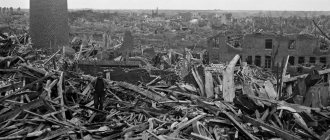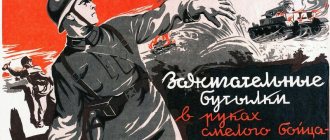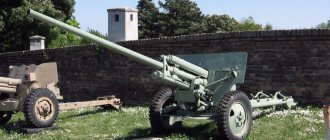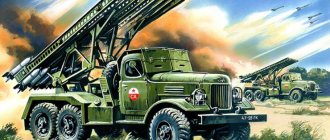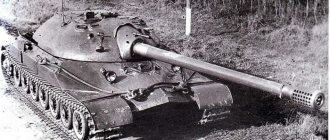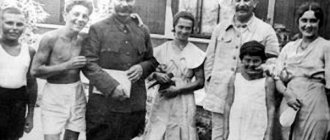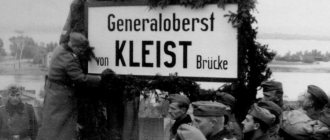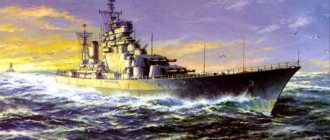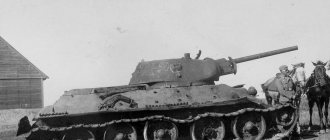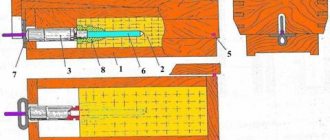Stalin's line and Molotov's line. Soviet fortifications.
Stalin's line and Molotov's line. Soviet fortifications.
During the period when the only communist state was surrounded by a ring of capitalist countries, the great leader of peoples, caring for its safety, built fortifications that reliably protected the country from at least an attack from one side, from the “thoroughly rotten West.” But the trouble is, in 1939 he began their destruction. And when Hitler attacked, the Red Army had to defend the country in an open field, and not on fortified lines. A natural question arises: why did he destroy them? The answer given by Soviet propaganda does not bring any clarity. But it’s an interesting question! Why did the two five-year plans first build fortifications, which were then destroyed for two years? Here below are my thoughts on this topic.
Below are excerpts from the text of my book “The Finnish Gambit or the role of the Soviet-Finnish war in the world revolution.” The book was published in Abakan in 2008 by the book publishing house "Brigantine". The volume of the book is 260 pages. The book is sold in the local history museum in Abakan, st. Pushkina 96. Copyright for the book is reserved. Using the text for commercial purposes without the consent of the author is punishable by law. Use of the text is permissible with a link to the source.
In the thirties, a line of fortifications was built along the western borders of the USSR, which was unofficially called the Stalin Line. This name stuck with it in historical literature and now no one calls it anything else. Communist writers, if they mention these fortifications in their books, always write that they were weak and outdated. If the first statement is at least controversial, then the latter is clearly wrong. Fortifications cannot become obsolete in ten years. The famous Viktor Suvorov claims exactly the opposite. He describes the Stalin line as the most powerful line of fortifications, equipped and armed with the latest military technology. According to him, this fortification line consisted of 13 fortified areas and its flanks rested on the shores of the Black and Baltic seas. The Stalin Line could not be bypassed like the Maginot Line. Each UR was a military formation, equal in number to a brigade and equal in firepower to a corps. Each UR had its own command and headquarters. Each UR had from two to eight machine-gun and artillery battalions, an artillery regiment, several separate batteries of heavy caponier artillery, a tank battalion, a communications battalion or company, an engineer battalion and other units. Each SD occupied an area of 100-180 kilometers along the front and 30-50 kilometers in depth. The URs had anti-aircraft and anti-tank weapons, unlike the Maginot and Mannerheim lines. URs had armored and reinforced concrete combat and support structures. The URs had underground reinforced concrete premises for hospitals, command posts, power plants, sleeping quarters, communication centers, workshops and warehouses. Each UR could conduct defense in complete encirclement for a long time.
Each UR consisted of strong points. Each strong point, in turn, could conduct a perimeter defense. There were different numbers of pillboxes at the strong points. Each pillbox could fight independently in complete surroundings. Each pillbox had warehouses with weapons, ammunition, and food. Each bunker had a medical unit, a canteen, and running water. The armament of the pillboxes was different. They were connected between themselves and the underground rooms by hidden communication passages. The pillboxes were equipped with chemical defense filtration devices. Each UR had anti-personnel and anti-tank obstacles, water barriers, minefields, and landmines.
The construction of the Stalin Line was not advertised. The location of the URs was unknown to our potential opponents. The fortified areas were located deep in Soviet territory. In a surprise attack, the first blows would hit empty space. The enemy would not have been able to reach Stalin's line in the first days of the war. During this time, the garrisons of the URs could be reinforced with personnel units and militias, and the passages between the URs could be closed with field fortifications.
But the passages could not be closed. In this case, if the enemy rushed towards them, the mass of advancing troops would be fragmented into many isolated streams. Then the enemy’s lines of communication would be under constant fire from the heavy caponier artillery of the fortified areas. Remaining behind enemy lines, the Urals would absorb most of the forces and would not allow the enemy to fully supply their advancing armies, keeping their lines of communication under constant fire.
In the mines, to stop the blast wave, blind and trussed jumpers are installed. The blind lintel isolates the area of the explosion with a dense wall, that is, it tightly blocks the mine workings. Here either it will stop the explosion, or the explosion will remove the jumper. The trussed lintel is made in the form of a horizontal or vertical lattice made of timber. The distance between the beams is equal to the thickness of the beam. Such a jumper will not stop the blast wave, but it will weaken it 15–20 times and will always remain intact. Behind it you can install another truss or blind jumper.
So, if the aggressors from the west had launched their attack through the passages in Stalin’s line, their attack would have suffered the fate of a blast wave passing through the truss.
Stalin's line is the titanic efforts of the first two five-year plans. And in 1938, it was decided to strengthen 13 old URs with caponier artillery. In addition, they began to build eight more URs on the Stalin Line. But 1939 came and the Molotov-Ribbentrop Pact was signed. This meant that World War II would begin. Hitler will begin to crush Europe. And Stalin? Will he continue to strengthen his defense? No!!!
It was in the fall of 1939 that all construction work on the Stalin Line was stopped. Previously, the USSR did not have a common border with Germany. And now she is. Previously, Germany could not attack the country of the Soviets, but now it can. What could Stalin do to strengthen the defense of our country.
Firstly, do not stop construction on the Stalin Line.
Secondly, strengthen the garrisons in each UR.
Thirdly, he could start building a new fortified line in front of or behind Stalin’s line, or start building two lines at once.
Fourth, order the Red Army to dig trenches from the White Sea to the Black Sea, combining field defense with strips of fortified areas.
But Stalin did not care about defense. Therefore, in the fall of 1939, the destruction of fortifications on the Stalin Line began. First, they removed barbed wire, mines, weapons from pillboxes, removed land mines, anti-tank barriers, filled ditches and artificial reservoirs. And in the spring of 1941, they began to blow up pillboxes and underground structures. Many of them were simply covered with earth, and some were handed over to various organizations.
The destruction of Stalin's line required funds and forces, and Stalin did not spare them. But he could have used these funds to strengthen the fortifications. Maybe he foolishly destroyed his line of defense? How then can we explain the fact that before this this line was built in compliance with all the rules of fortification art? Why did Stalin suddenly become stupid? When Hitler attacked, Stalin ordered the restoration of the old fortifications to begin. Why is this? Because he suddenly became wiser? Why did Stalin destroy the fortifications that he built over two five-year plans in two years, and after Hitler’s attack began to restore them again?
Wide passages were left between the URs of Stalin's line. In peacetime, transport routes passed through them. Through these same passes, Soviet troops left to liberate the Baltic states, Eastern Poland, Bukovina and Bessarabia. But to liberate Europe, their capacity was insufficient. Stalin's line prevented the secret concentration of troops near the border. If the operation to Sovietize Europe began, it would interfere with the supply of its own troops. Therefore, in the fall of 1939, the liquidation of its fortifications began.
And on June 26, 1940, the Soviet military leadership decided to begin construction of a new line of fortifications. Later it was called the Molotov line. This, of course, was an unofficial name, but it stuck in historical literature. This line was not built to replace Stalin's line. The Molotov line was built right on the border, repeating all its bends. All of its pillboxes were visible to the German border guards. The pillboxes were built in one line. There were no rear positions on it. The approaches to the pillboxes were not covered by obstacles and mines. In the old pillboxes, the armor plates were 350 mm thick, while in the new ones they were only 200 mm thick. The new pillboxes were not camouflaged and were built in front of the enemy, so the Germans, thanks to just one visual observation, could study any pillbox down to the smallest detail. The pillboxes could not conduct a perimeter defense. Fire from their embrasures could only be directed towards the German border. The pillboxes could not cover each other with flanking fire and could not fire at enemy soldiers who had sneaked to the rear. The concrete walls and ceilings of the pillboxes were too thin and could not withstand prolonged artillery fire. Heavy bombs could easily penetrate their reinforced concrete floors. Neither soil nor stone was placed on top of the pillboxes. The walls of the pillboxes were not covered with piles of boulders. But the old pillboxes on the Stalin line had a ceiling on top, a layer of soil and stones several meters deep, and embankments of boulders covered their walls from direct hits from shells[1]. Why were all the fortifications built completely differently on the Molotov line than on the Stalin line? Because the Molotov line was intended to support its own offensive. During your own attack, these pillboxes could be used to support your advancing troops with fire. This is better than firing from open positions.
The pillboxes are located in one line at the very edge of the border, there are no other pillboxes behind them - this is not necessary. With its own offensive, each pillbox deep in its territory will be doomed to inaction.
The pillboxes have thin walls and ceilings, and neither soil nor stones are poured on top. If the war begins with its own attack, then our troops will quickly move forward, and the pillboxes of the Molotov line will not be subject to prolonged artillery fire. In this case, pillboxes can do without embankments on the floors.
Pillboxes cannot cover each other with flanking fire - it doesn’t matter, our troops will go on the offensive, not the enemy’s. The pillboxes will support the attackers with fire, not each other.
The pillboxes are not camouflaged. This is good. Let the enemy see them and think that we are preparing for defense.
There are no obstacles, obstacles or minefields in front of the pillboxes, which means there will be no hindrance to our advancing troops.
After the war, Soviet historians came up with an excuse: the Molotov line was built to replace the Stalin line, but they did not have time to build it. Thus, they want to convince people that the defeat in 1941 was caused by miscalculations of the command, they say, they did not have time to build new fortifications before Hitler’s attack. They were late, they say.
This argument does not stand up to criticism. The Soviet leadership began to destroy Stalin's line in 1939. At the same time, the decision to build a new line has not even been made. If the Molotov line had been built to replace the Stalin line, then a decision regarding both lines would have been made at the same time.
They decided to build the Molotov Line on June 26, 1940. Let me remind you that on June 24, 1940, France signed its surrender, and on June 25, the armistice agreement came into force. France is defeated, Hitler turns his attention to England and North Africa. At this moment, the decision was made to build a new line of fortifications.
By the way, Soviet military builders began to build exactly the same fortifications on the Turkish and Iranian borders. And on August 25, 1941, the Soviet army committed aggression against Iran. Soviet troops did not commit aggression against Turkey. There was simply no time for her - the Nazis attacked. But if everything had gone according to Stalin’s plan, the Soviet troops would have reached Turkey.
For the interests of defense, it would be more profitable to leave the old line of URs and build another one in addition to it. Let the new line be weak, let it be without minefields. It doesn’t matter that it was built with many mistakes - if it doesn’t stop the enemy, it will at least wear him down and delay him for some time. After this, it will be easier to stop the enemy on the second line of defense. For defense, it is more advantageous to have two lines of fortifications rather than one. Only to cover your offensive you need only one line of fortifications in the direction of the future offensive. Soviet troops were preparing to attack in stages in several directions: to Europe, Turkey, Iran, so new lines of fortifications were built on the borders with them. One for each direction.
After the start of construction of a new line of fortifications on the western border, the construction of some fortified defenses was classified as “construction of the second stage.” Translated from Soviet nomenclature language into human language, this meant: construction has been frozen.
The construction of both lines was supervised by D.M. Karbyshev, who had four higher military educations. He built fortifications back in the First World War and the Civil War. After the Soviet-Finnish war, he thoroughly studied the Mannerheim line. He knew that the Mannerheim line consisted of several fortified strips. Was it really not clear to him that two lines are better than one? Did he really not know how to build fortifications for the defense of his country? If he made a mistake when building fortifications on the Molotov Line, why wasn’t he shot?
That's because he wasn't wrong. He built the Molotov line correctly, but he built it to cover aggression. During the war with the Germans, the Red Army, preparing for an offensive, will also build pillboxes on the front line so that the enemy sees them and thinks that a defense is being prepared. In the same way, our army built pillboxes at Khalkhin Gol
before his sudden attack. It’s just that this trick didn’t work with the Germans in 1941. They themselves adhered to the same tactics and at the same time built exactly the same pillboxes. Having seen how and where the Red Army soldiers built pillboxes, he understood their purpose.
The communists say that they did not have time to complete the Molotov line. But they managed to destroy Stalin’s line. If we were in a hurry to build a new line of fortifications, we would not waste energy and money on destroying the old one. Let it stand until we build a new one. Of course, breaking is not building. You have to spend much less effort on destruction than on construction. But if the USSR had abandoned the destruction of the fortifications of the Stalin Line, throwing all its efforts into the construction of the Molotov Line, the construction of the latter would have gone faster. What was built on the Stalin line in two five-year plans was liquidated in two years. But if the forces used to destroy old fortifications had been used to create new ones, then many pillboxes on the Molotov line would have been completed before the German attack.
Rokossovsky arrives at the western border in May 1941: “The construction of the fortified area was just getting underway.” (“A Soldier’s Duty.” p. 8). And the pillboxes on the Stalin line have already blown up. The communists came up with the argument that the lack of weapons for the Molotov line allegedly forced the disarmament of the Stalin line. This argument will not work as an argument. Firstly, the disarmament of old missile defense systems began when new ones were not even in the project. Secondly, to arm the new missile defense systems, it was enough to remove a small part of the weapons from the old ones, and not disarm the entire line. Thirdly, the guns from the old pillboxes did not fit the new pillboxes by their design and, therefore, they could not be moved from the old pillboxes to the new ones.
“In February - March 1941, at the Main Military Council of the Red Army, it was twice discussed how to quickly complete the construction of new URov and their armament... But no matter how they argued, no practical solution was found to speed up the production of UR artillery and provide the necessary UR equipment... And artillery The design of the old URs did not correspond to the new pillboxes.” (Zhukov G.K. “Memories and Reflections”, pp. 271-272).
If we sum up everything that Soviet propaganda came up with about the history of the Stalin and Molotov lines, we get the following: the Soviet military leadership in 1939 decided to remove the guns from the old pillboxes of the Stalin line in order to arm the pillboxes on the Molotov line with these guns, which were not even there yet. project, but there was already a shortage of guns for them, and after these guns were removed, they began to build pillboxes of the Molotov line, and ones that, by their design, did not allow the installation of guns taken from the pillboxes of the Stalin line, and pillboxes of the Stalin line after that they blew it up.
In general, Soviet propaganda did not come up with any reasonable justifications for the actions of the Soviet military leadership.
By the way, our troops did not even have time to occupy the new pillboxes built on the Molotov Line during the German attack. They were too close to the border. The Germans got to them faster. “Rifle units, raised on combat alert and included in the first echelon of cover, entered the battle on the move, without having time to take prepared positions.” (Zhukov G.K. “Memories and Reflections.” Volume I Page 10-11.).
“The coastal fortifications along the Western Bug were not occupied by Russian troops... The Russians equip their pillboxes with full lighting. They don’t seem to suggest anything” (Page 120 Anfilov “The Unforgettable Forty-First.”).
Why were there no garrisons in many Soviet fortified areas right on the western border on June 22? Communist historians claim that Stalin was afraid of provoking a German attack, so he did not allow soldiers into the pillboxes. Indeed, a large number of troops right on the border could not help but make Hitler worry about the fate of his country. This could be interpreted by him as preparation for aggression and push him to attack the USSR. But if Stalin had really been afraid of provoking this attack, would he have given the order to build pillboxes on the very edge of the border? It was enough for the builders to retreat ten kilometers deep into their territory so as not to frighten their German neighbors with their construction. In the end, it was the Soviet pillboxes on the very edge of the border that provoked Hitler’s attack. He understood why such pillboxes were built. In the depths of their territory, fortified areas would not be visible from enemy territory. Their construction would be easier to keep secret. The enemy would no longer be able to study them by visual observation from his bank of the border river. It was possible to keep permanent garrisons in fortifications far from the border. The enemy would not have seen this. And in the event of a surprise attack, the garrisons of the fortified areas would have time, without haste, to make final preparations for battle.
On June 22, 1941, Soviet pillboxes on the Molotov Line were not occupied by Soviet troops for completely different reasons. When preparing for an attack on a neighboring country, all troops cannot be concentrated directly on the border. Masses of soldiers should be kept at least a few kilometers away from it, so that some brave soldiers, in anticipation of the upcoming offensive, do not rush across the border ahead of time. Soviet military leaders did just that. They kept masses of soldiers close to the border. Planning to put them in border pillboxes just before the attack on their neighbors.
If Stalin had not intended to attack Germany in 1941, he would not have been afraid to place his soldiers in pillboxes on the Molotov line. The construction of fortified areas at the very edge of the border is a wrong solution for defense needs. But we could justify ourselves to our neighbors by the fact that, due to our greed, despite the abundance of territory, we do not want to give up even a piece of our land to the enemy, and we intend to fight even for those pieces of land for which it is not profitable for us to fight from the point of view of strategic interests. It was possible to raise this topic in our own press and explain that it is not strategically profitable to build pillboxes in full view of the enemy, and at the same time outline all the negative aspects of such construction, but explain that in the event of an enemy attack, we will fight for any piece of land, even on the very edge of the border, even when it would be more profitable for us to retreat and not take the fight. And so that our neighbors, the pillboxes built right on the border and the soldiers sitting in them, do not arouse suspicion of our aggressive intentions, we should block off the entire space between the border and the pillboxes, as well as the space behind these pillboxes with mines, gouges, rows of barbed wire, we should dig more ditches and build more ramparts. Then the Germans would believe that we have no aggressive intentions. Since it would be inconvenient to attack through such a line of fortification. The Maginot Line pillboxes were also built close to the German border, but anti-tank and anti-personnel obstacles convinced the German side that France had no intention of attacking Germany, since they themselves impeded the advance of French troops to the same extent as the advance of German troops.
In reality, Stalin was afraid to keep troops in border fortified areas due to the fact that Soviet soldiers themselves could provoke a conflict with Germany. After all, even despite all the measures he took, Soviet soldiers in 1941 very often crossed the border and attacked German units, and also skirmished with German border guards. Therefore, Soviet military leaders tried to hide their first-echelon soldiers in the forests at a minimum distance from the border, so that they were not directly in sight of the enemy. They just didn't try hard enough. Many units of the Red Army were stationed right on the banks of the border rivers. By the way, this also scared the Germans. Such units were deployed in areas that the Soviet command considered the main ones, that is, where the main and strongest attacks were planned. There were so many troops gathered in these places that there was often nowhere to hide them. In these areas no fortifications were built at all. This was considered unnecessary; without them, there was enough power here. But in secondary areas there were fewer troops. It was in such places that the fortified areas of the Molotov line were built. They were supposed to support the advance of their troops in the first days of the war. Help repel German counterattacks if such occur. And to compensate for the smaller (compared to the main directions) number of troops. And since there was enough space in these areas to hide their troops, they were hidden at a short distance from their border fortifications. That is why, at the time of the German attack, there were no Soviet soldiers in the pillboxes on the Molotov line.
The Germans captured them without a fight. After all, the Soviet attack on Europe was planned for July 6, 1941. And our troops should have occupied the URs two days before this date, or maybe even a few hours before it.
[1] Boulders were piled near the walls of the pillbox in such a way as not to limit the range of fire from the embrasures.
Strategically important, but difficult to achieve task
It should immediately be noted that such a name never appeared in official documents. It first appeared in 1936 in one of the Russian-language Latvian newspapers, then it was picked up by the Western press, and after that the term “Stalin Line” became widespread.
According to the program proposed by Stalin, it was planned to build a chain of defensive structures along the entire western border of the country, the length of which was 2 thousand km. Since the creation of a continuous fortification line was not possible for economic reasons, the concept of constructing separate fortified areas (UR) in the most operationally important areas was adopted.
Simultaneously with the Soviet Union in the 20-30s, a powerful strip of defensive structures, known as the Mannerheim Line, was also erected on the territory of the Finnish part of the Karelian Isthmus. Stalin and the High Command of the Red Army, well aware of the progress of this work, decided to build an analogue of the Finnish project, but on an incomparably larger scale.
However, the implementation of such a program contained significant difficulties. Even in its abbreviated version, it was on the verge of the capabilities of the Soviet industry of that period. An important fact was that in the 30s there was a massive replacement of the previous leadership cadres of the engineering troops, who also consisted of officers of the tsarist army, with new young specialists, most of whom did not have the proper experience and knowledge.
Technical commissions and trials
These and many other shortcomings, identified back in 1937, became the cause of sharp criticism against the drafters of the project and those who directly built the fortified areas. The “Stalin Line” along its entire length was carefully examined by a number of commissions, the general leadership of which was carried out by Lieutenant General of the Engineering Troops Kuzma Podlas.
As a result of this check, which was primarily of a political nature, a significant number of officers from among the command staff of various levels were arrested and brought to trial. All of them were charged with sabotage and deliberate destruction during the construction of strategically important facilities. The demonstration trials continued the following year, which significantly undermined the personnel potential of the Red Army and deprived it of many knowledgeable specialists. For example, in the Kiev Military District, out of five commandants of fortified areas built there, four were shot.
The basic concept of creating a line of defense
According to the plan adopted at the end of the 20s, the “Stalin Line” complex was supposed to consist of separate missile defenses, with a front length of 70 km, and consisting of several positions going deep. The first of these was the so-called forefield - a territory on which fortifications were not erected, but various kinds of obstacles were created, such as anti-tank obstacles, hedgehogs, barbed wire barriers, etc.
Following this came the advanced forward position, which consisted of the main defensive structures - bastions, bunkers, bunkers and other fortification elements, grouped into battalion defense units. Each of these nodes, located in a line, had a length of 3-6 km, and went 3-5 km deep.
Fortifications of the second echelon of defense were built on the flanks of the forward positions. They were moved somewhat deeper and were intended to prevent the enemy from encircling the main forces of the SD. In addition to them, in the places where the enemy was most likely to attack, cut-off positions were additionally built - nodes consisting of a number of fortifications erected in case the enemy broke through the main defensive line.
Thus, the “Stalin Line” complex, according to its authors, was supposed to represent a powerful and reliable defensive line. The main task set before the garrisons that made up the UR was to delay his main forces in the event of an enemy attack and gain the time necessary for a general mobilization and approach of troops.
Innovations in the construction of fortified areas
Nevertheless, the work of the commissions also brought a number of positive results. Based on the shortcomings and miscalculations it identified, it was possible in a short time to rework the very concept of building such a large-scale defensive line and, if possible, to modernize already built facilities.
In particular, the length of fortified areas was significantly increased. If earlier it ranged from 50 to 70 km, now it has reached 100-120. The location of its individual nodes has also changed. They began to be placed in a checkerboard pattern, in two separate echelons. A number of other design changes were also made.
In 1938, due to the aggravated international situation by that time, Stalin gave instructions to further expand and modernize the defense line. At the same time, the urgent construction of eight more new fortified areas began - Starokonstantinovsky, Izyaslavsky, Sebezhsky, Kamenets-Podolsky, Shepetovsky, Slutsky, Ostrovsky.
All of them were located in such a way as to fill the remaining gaps in the general complex of defensive structures, and provide communication between the previously built SD. The surviving archival documents of those years indicate the scale of the work performed. It is known that by the end of 1939, 1,029 new engineering facilities were built in the newly built fortified areas alone.
Memory of the war years
Summing up the results of the last war, historians come to the conclusion that the “Stalin Line”, which was removed from combat duty in 1940 (photos of its individual objects are given in the article), nevertheless played a certain role during the first and most difficult days of the war. In some areas, the enemy’s advance was stopped for a period of 2-3 days to several weeks, which played an important role in the context of hostilities.
Nowadays, a number of memorial museums have been created in the territories of the former fortified areas that made up the “Stalin Line”. Belarus became one of the first republics of the former Soviet Union to create such a military-historical complex. For the sixtieth anniversary of the Victory, a group of activists organized an open-air museum. It is located in the area of the former Minsk UR, and its central exhibitions are located in one of the bunkers that have survived to this day.
The example of Minsk activists was followed by residents of another Belarusian city of Zaslavl, who unveiled a monument to marines and sailors on July 24, 2012. One of the historical and cultural sites was also chosen as the location for its installation.
Day by day, the expositions of existing memorial complexes are replenished and, along with this, new ones are created. Thus, in 2009, two museums of military glory were opened - in the Pskov region and in Sestroretsk, a municipal entity included in the Kurortny district of St. Petersburg. This memorial, called the “Sestroretsky Line,” consists of a bunker, whose call sign during the days of the defense of Leningrad was “Elephant” (it began to be called that in subsequent years), as well as several small firing points. This fortified area was also part of the general defensive system “Stalin Line”.
How to get to the Sestroretsky Frontier memorial complex? The easiest way to do this is by electric train from the Finlyandsky Station in St. Petersburg. The train schedule is designed in such a way that even on weekdays the interval between them does not exceed one hour. In addition, you can use minibus No. 305 from the Staraya Derevnya metro station or No. 827 from Prospekt Prosveshcheniya. Those who have personal transport can get to Sestroretsk along the Primorskoye Highway. The distance is 36 km, and taking into account the congestion of the route, the journey usually takes about 40 minutes.
In 2014, a four-part documentary film directed by Oleg Chetverikov, “Stalin’s Line,” was released on screens across the country. The film tells in every detail about the construction of this unique system of defensive structures that had no analogues in world history. In its creation, many archival materials were used that had not been published anywhere before and are of great interest to everyone who cherishes the memory of the war years.

